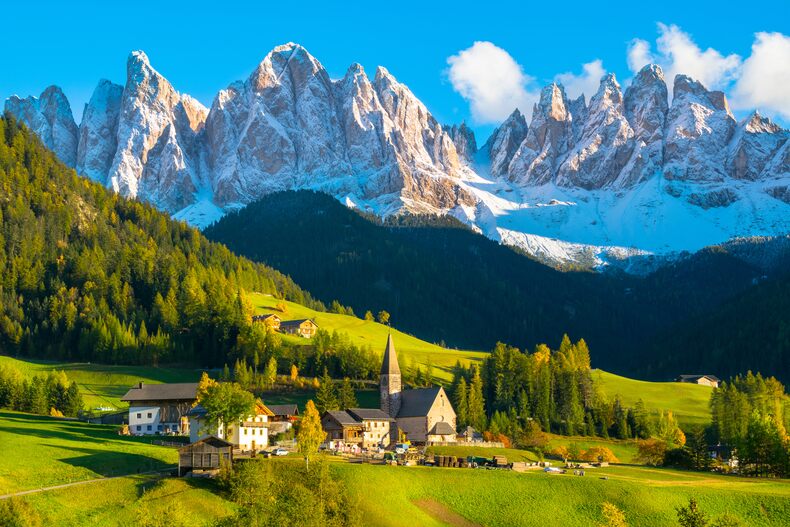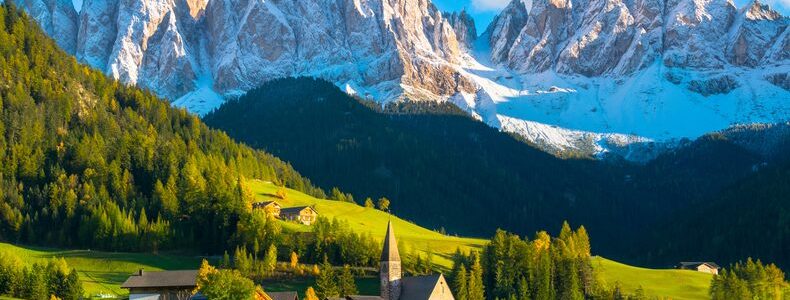The greenest and most sustainable region of Italy, according to Michelin, is Trentino-Altoadige, which this year received the highest number of green stars. Green? Yes, because since last year the Rossa, as the Michelin guide is defined, has assigned a new star color that establishes the restaurants that take charge ofconsequences ethical and environmental of their business and who they work with "sustainable" producers and suppliers to avoid waste and reduce, or better still reset, the plastic and other non-recyclable materials from their supply chain.
What are the characteristics that make the green star conquer?
According to the Michelin guide, here are the prerogatives that a "green" restaurant must have:
1) theuse of local and seasonal ingredients;
2) the selection and the quality of the products used, including biological, biodynamic and ethical origin;
3) the low energy impact in the use of resources;
4) the composition of the menus, which must be respectful of seasonality and the territory;
5) the enhancement of initiatives for waste reduction, including zero waste policies, that is the age-old theme of disposal, namely the reuse and recycling of waste;
6) the initiatives of communication and passion shown by the chef and staff on the topic of "sustainability";
7) the creative initiatives in the environmental field implemented;
8) the collaboration with the local community, in particular small and micro producers.
So many chefs work directly with growers, farmers and fishermen, who are respectful of nature, they grow plants and raise animals, use regenerative methods such as no-dig gardens and catch crop rotation. They care about their impact on the planet and show passion and awareness of an issue that has grown to be a movement towards positive change. In addition to environmental considerations, they are concerned with the quality of life of their staff and support social projects at local, national and global levels.
 Why is Trentino-Altoadige so "green"?
Why is Trentino-Altoadige so "green"?
The concentration of green stars is mainly in the north but in particular in Trentino-Altoadige, where most of them are found. Of course, being on a plateau, next to the Dolomites and being able to go and get milk and butter directly from the mountain huts helps more than being in a metropolitan city like Milan and Rome. But in reality this region stands out for the attention it has always had towards this issue. First of all, the chef could only see it assigned in 2020 Norbert Niederkofler of St. Hubertus of San Cassiano (Bz) with its "Cook the mountain" philosophy, the first to have cleared through customs, thanks also to the power of its three Michelin stars, the world of cuisine local, seasonal and sustainable and to have involved international chefs in his ambitious project.
What are the "green" restaurants to visit in Trentino-Altoadige?
EARTH. In Sarentino, Gisela and Heinrich Schneider, respectively in the dining room and in the kitchen, have created an evocative, eco-friendly and plastic free environment from a mountain hut: Land, "the magic place", as they like to call it, also boasts a Michelin star. "The careful use of resources, respect for food and for those who produce it, recycle as much as possible, use the abundantly laid table of nature. All these are points that go hand in hand with nature, in our daily lives, accustomed to a mountain life "tell the Schneiders." The wild herbs and mushrooms come exclusively from the woods directly in front of our house. All the other ingredients such as meat, flour, milk, cheese, bacon, butter and much more come from the surrounding farms of our valley ".
ANCIENT INN AT THE DEER. In San Genesio theAntica Locanda al Cervo it bases all its vegetable supply on its own vegetable garden and the pantry is contributed by organic farmers and small local producers. The menu is based on all local specialties, in 2008 the restaurant joined the Pact for Climate Neutrality and keeps the ecological footprint under control.
LERCHNER'S IN RUGGEN. In San Lorenzo di Sebato we find a restaurant that has been committed to sustainability on many fronts for years. 100% South Tyrolean products and the property runs a cattle farm, whose meat is produced exclusively for the restaurant. Also, you won't find any exotic or ethically questionable products on the menu here.
1908. In Soprabolzano, on the Renon Plateau, chef Stephan Zippl this year received a double award: star and green star. The dishes are eco-sustainable and boast a strong creativity, there is a continuous and direct dialogue with the small local producers, who often condition the menus and dictate the law, like nature, on what to find on the menu.
AGRITUR EL MAS. Finally, we would like to point out a farmhouse, where most of the products come from the stable and from the private garden. Here cows, goats, donkeys, pigs are raised and the cheeses are made in the own dairy. We are in Moena in Trentino and Agritur El Mas is also an educational farm where children can be taught the importance of environmental sustainability.
January 2022
Camilla Rocca


